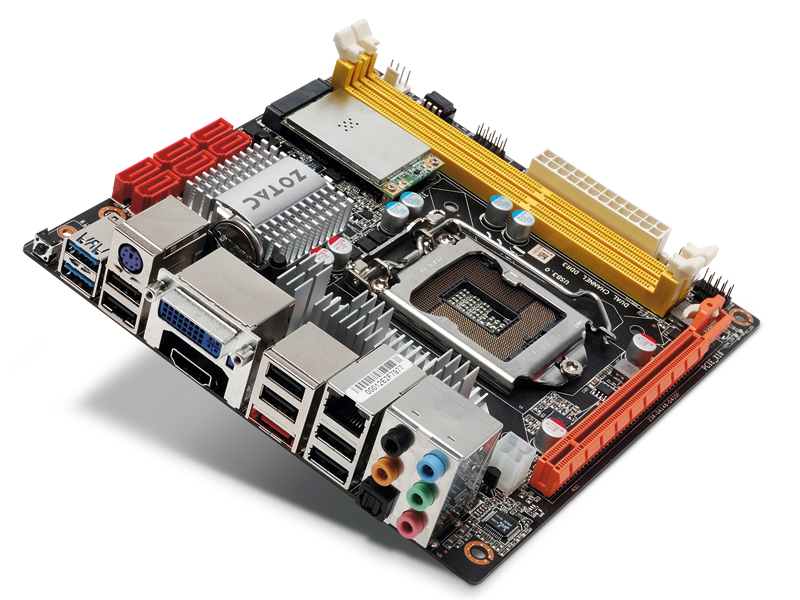TechRadar Verdict
A high performance Mini-ITX board is a nice idea. The Gigabyte H55N-USB3 executes it better.
Pros
- +
Great feature set includes N-spec WiFi
- +
Six SATA ports
Cons
- -
Disappointing overclocking results
- -
No USB 3.0
Why you can trust TechRadar
Stuffing Intel's desktop-class H55 chipset into a miniscule Mini-ITX motherboard is hardly a standard procedure.
However, the Zotac H55-ITX WiFi can't hope to get by based on nothing more than novelty. It must beat the likes of Gigabyte's identically proportioned and similarly specified H55N-USB3.
On paper, you'd give the Zotac H55- ITX WiFi more than a sniff at pulling it off. It matches its Gigabyte nemesis in most regards, including support for powerful discrete graphics and a full range of video output options when running on Intel HD integrated video.
To all that support it adds an integrated N-spec WiFi networking chipset. That said, the H55-ITX WiFi does lack support for USB 3.0. You might say, therefore, it's a dead heat on features.
Not so for price, however, with the Zotac demanding an extra £10 or so. In that context, the solution is simple. It's a gloves-off contest for performance props. May the best board win.
Okay, the Zotac H55-ITX WiFi is more expensive than its closest competitor from Gigabyte, but it does come with a few extra frills. Apart from the aforementioned WiFi networking chipset, Zotac has managed to squeeze in an extra pair of SATA ports for a grand total of six. That's as many, in other words, as a typical ATX motherboard.

Weak performance
Given the price premium, however, the lack of USB 3.0 and SATA 6Gbps support is disappointing. But neither is as significant as the H55-ITX WiFi's real weakness, which is performance.
At stock clocks, the gap may be small. We're talking a second here and a frame per second there, but the Gigabyte is consistently ahead. Bring overclocking into the equation and things really go south for Zotac.
Firstly, the BIOS menu is a bit clunky and confusing. Dig around and you will eventually discover that most of the important options are available even if enthusiasts will note the absence of some of their favourite fine tuning parameters.
Anywho, the bottom line for the H55-ITX WiFi is a top baseclock frequency of 180MHz. That's well short of the Gigabyte H55N-USB3's 210MHz maximum frequency and could prove a limiting factor when overclocking.
Moreover, running components at the ragged edge is rarely a good idea. Arguably, therefore, the long term maximum for this motherboard is 160MHz to 170MHz.
It's also worth noting that the H55- ITX WiFi is peculiarly power-hungry when running a Core i7 processor combined with discrete graphics. This may well be an erroneous voltage setting that could be remedied simply by a future BIOS update. For now though it certainly undermines this motherboard's eco-friendly and efficiency credentials.
Technology and cars. Increasingly the twain shall meet. Which is handy, because Jeremy (Twitter) is addicted to both. Long-time tech journalist, former editor of iCar magazine and incumbent car guru for T3 magazine, Jeremy reckons in-car technology is about to go thermonuclear. No, not exploding cars. That would be silly. And dangerous. But rather an explosive period of unprecedented innovation. Enjoy the ride.
